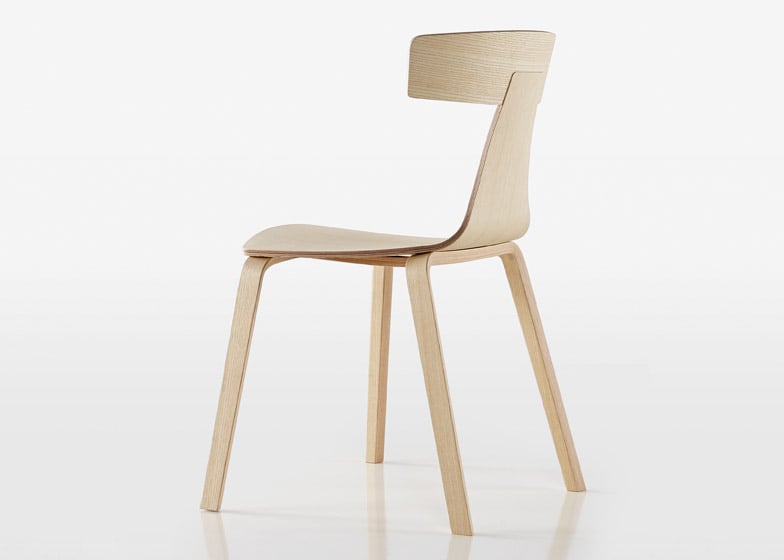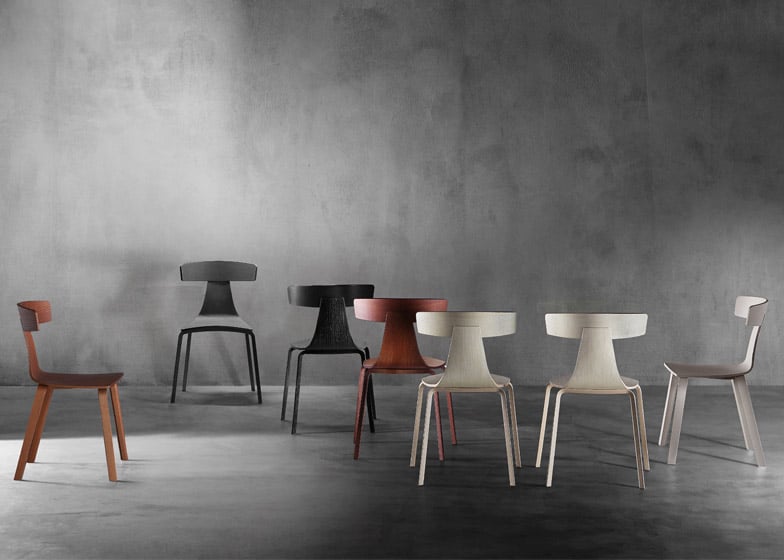Milan 2015: German designer Konstantin Grcic combined two plywood shells into a T shape to form this chair for Italian furniture brand Plank (+ slideshow).
Launched at Milan's Salone del Mobile furniture fair, the lightweight Remo chair is designed to be easily relocated.
"This is a chair for use in situations where it is moved around," Grcic told Dezeen. "It's a chair probably for restaurants, for cafes, for bistros, but it could be a kitchen chair."
Instead of using a single plywood section to form the shell, the designer chose to combine the seat portion with an additional horizontal element to form the backrest.
"The shell we have actually made in two parts and that's kind of special," said Grcic. "It could be cut out of one, but by gluing the backrest to the spine it gives the piece a more free shape."
The design is available with tubular metal legs and as two versions with wooden legs – one that is stackable and one that isn't.
Grcic was keen to create a version of the chair that does not stack as he believes the function is rarely used and detrimental to the aesthetic.
"Chairs that stack always have to follow a certain geometry that very often makes them ugly and I think the one time you actually stack them makes the chair less beautiful for its lifetime," he said.
"There is an advantage in stacking but it's mainly during production, and warehouse and shipping," he added.
The designer also presented a range of wooden seating for Mattiazzi during the Milan furniture fair, which concluded on 19 April.
During the event, Grcic was one of a series of designers who spoke out about the "awful" intrusion as visitors and journalists attempted to take photos and speak with designers.















